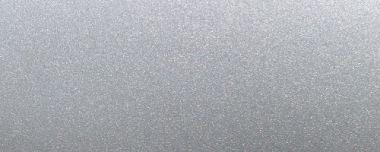Processing metallic and special-effect paints
Clear coat / Optics
In the industrial coating of metallic and special-effect paints, a clear coat is generally dispensed with as a top layer for reasons of costs. In contrast to car body paintwork, where two-layer metallic coating is the norm, the optical image is not such an important factor in the single-layer application of metallic and special-effect paints.
Adjusting to colour samples
Dreisol Coatings adjusts the colour shades of metallic and special-effect paints according to the optical and technical possibilities available by using a pressurised-air application as closely as possible to the existing colour samples or RAL colour charts.
Primer
When using special-effect paints for coating, we recommend a light grey primer (e.g. RAL 7035, RAL 7032). This achieves a good degree of opacity. Individual cases may necessitate the use of other tinted primers.
Spraying process
Under certain circumstances, a large surface with a single coat of metallic or special-effect paint can appear cloudy. To achieve a non-cloudy surface, a specially adapted application and painting technology is generally necessary. In certain cases, it is advisable to perform the application using a "classical" pressure cup spray gun instead of the normal pneumatic airless spraying process. This allows the application of thinner and more uniform wet layers, whereby a varying absorption of metallic or special-effect particles on the coated surface is avoided, resulting in a more even surface. A significantly better surface "matting" is also possible by a purely atomising application, which also results in a considerably more evenly coated surface.
Electrostatic atomisation
Electrostatic atomisation is not recommended since the processing of metallic paints can result in a short circuit. Possible metal particle concentrations (so-called metallic nests) may lead to a diffuse, uneven surface.
Using appropriate sieves
The use of fine sieves, for instance, in airmix systems, should be avoided, as otherwise the special-effect particles can be sifted out when processing special-effect paints, which strongly reduces the effect.
Assessment by the end customer
We recommend that the colour shade be approved by the end customer – based on a painted colour sample, before the complete paintwork is carried out.



